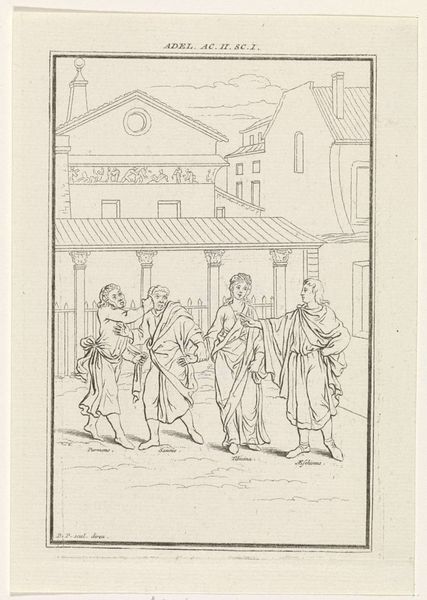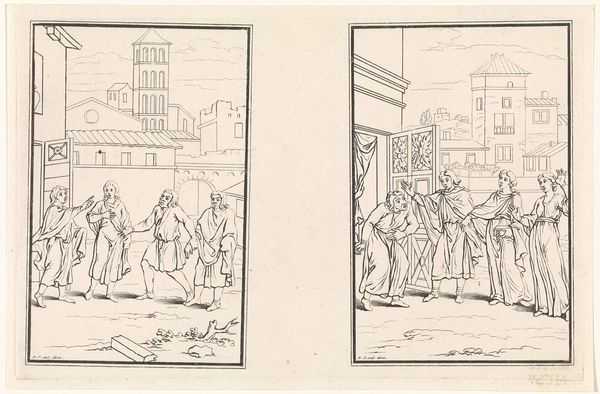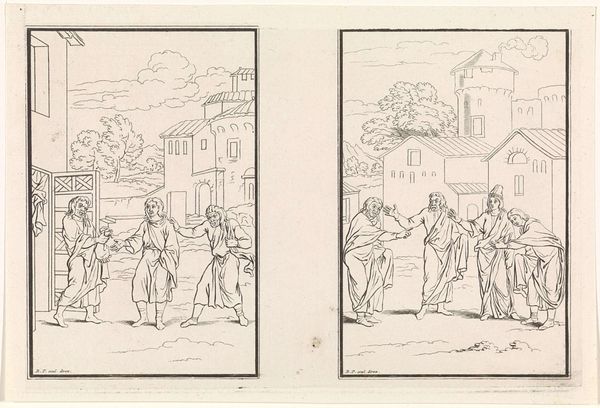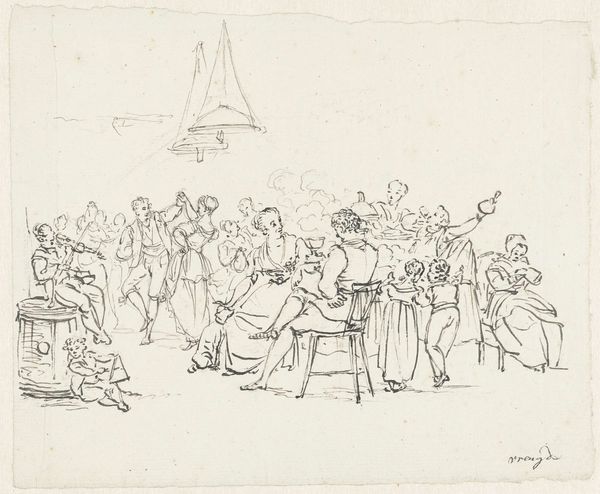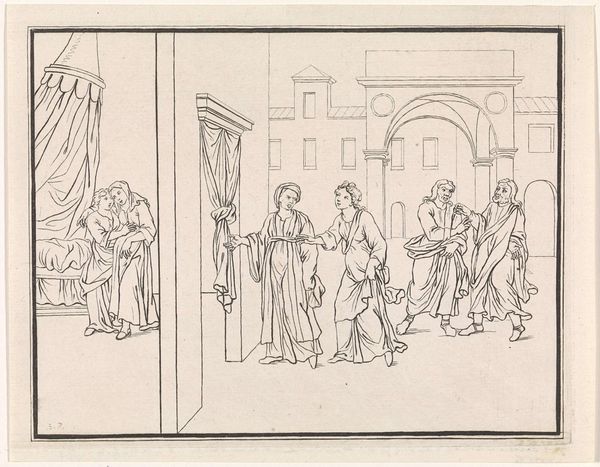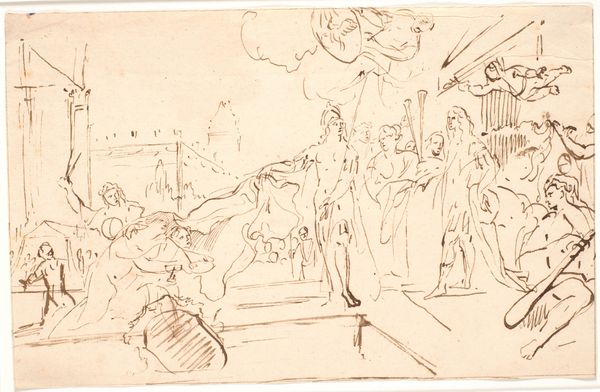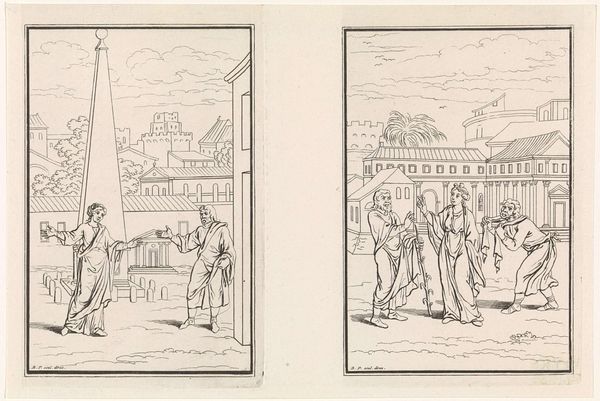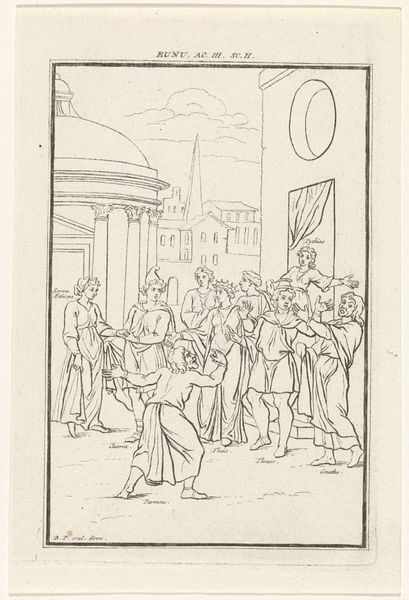
drawing, ink, pen, engraving
#
drawing
#
comic strip sketch
#
narrative-art
#
baroque
#
pen illustration
#
pen sketch
#
figuration
#
personal sketchbook
#
ink
#
ink drawing experimentation
#
pen-ink sketch
#
pen work
#
sketchbook drawing
#
pen
#
history-painting
#
storyboard and sketchbook work
#
academic-art
#
sketchbook art
#
engraving
Dimensions: height 130 mm, width 169 mm
Copyright: Rijks Museum: Open Domain
Curator: Here we have Bernard Picart's 1716 engraving, "Scène uit de komedie Eunuchus van Terentius," currently residing here at the Rijksmuseum. Editor: What immediately strikes me is the line work. It’s incredibly spare, almost skeletal, yet it manages to convey such a sense of dynamic movement across the whole scene. Curator: Precisely! Picart, though trained in a more classical academic style, here adopts a surprisingly lively hand, one attuned to the changing social functions of imagery in his time. Prints were becoming increasingly popular as modes to distribute images to a wider audience, which meant they had to have immediacy. Editor: Look how the artist uses those repetitive lines to describe the robes, creating volume and a flurry of energy. The uniformity adds a slightly manic air to the figures. Curator: This depiction is of a specific theatrical scene from Terence's comedy. You can see that Picart has situated this action against the backdrop of a grand architectural fantasy that suggests Rome. By referencing these familiar cultural markers, Picart creates a recognizable stage. It anchors the play and implicates the viewers in its socio-cultural significance. Editor: I do agree that the backdrop works to place this within a clear architectural, historical, and theatrical context. At the same time, I see something delightfully disjunctive. Look how that half-moon shape hovering above the action refuses any logical integration with the scene. Curator: These deliberate compositional choices speak to how these plays continued to resonate within emerging modern sensibilities. Picart bridges this historical moment with an active reception. This image circulated. Editor: It does speak to a continuous line of artistic and intellectual evolution. For me, analyzing his delicate yet assured line work shows Picart understood the visual language required to grab the eye of a changing society.
Comments
No comments
Be the first to comment and join the conversation on the ultimate creative platform.


